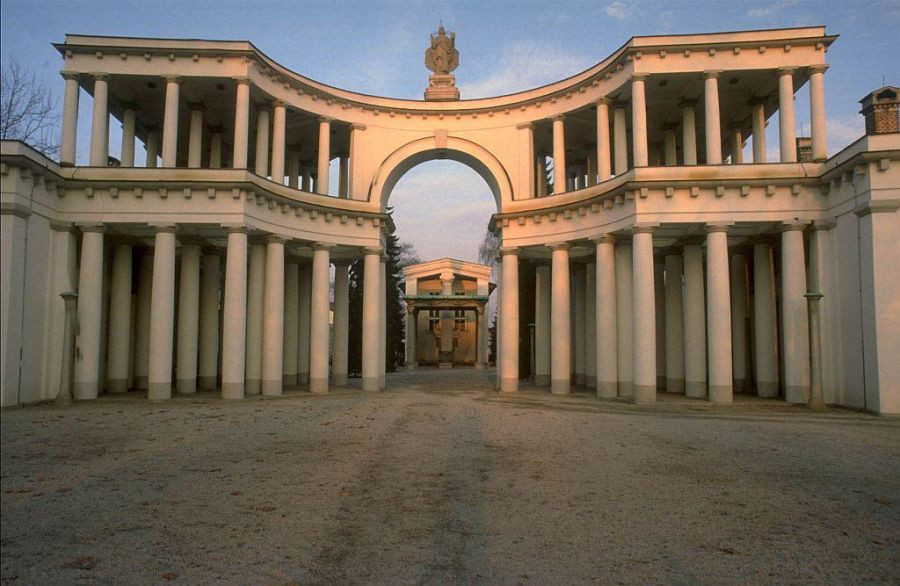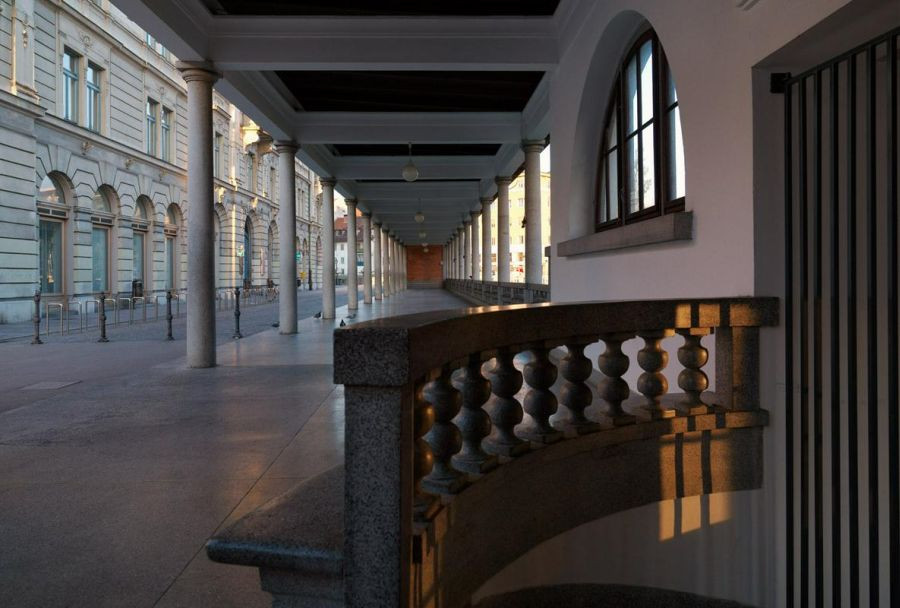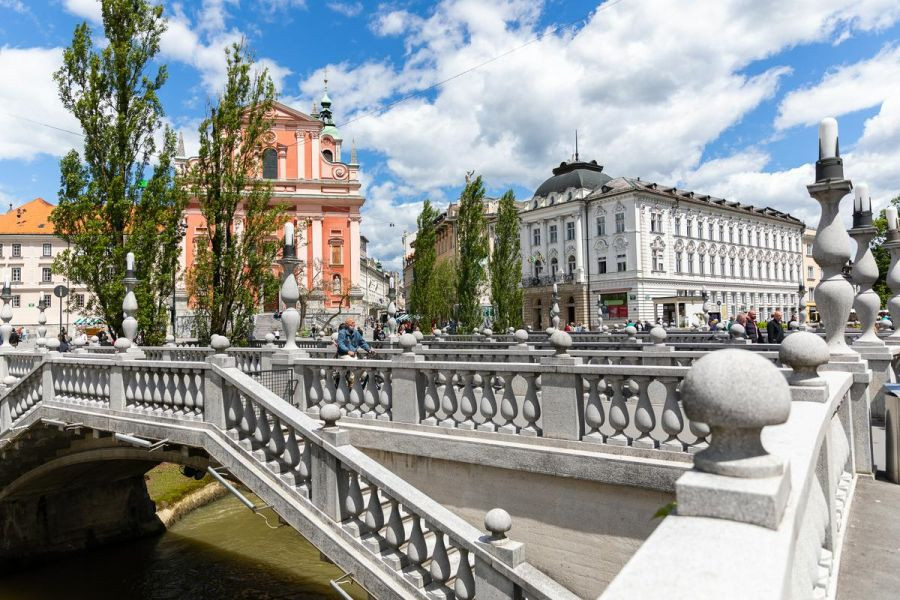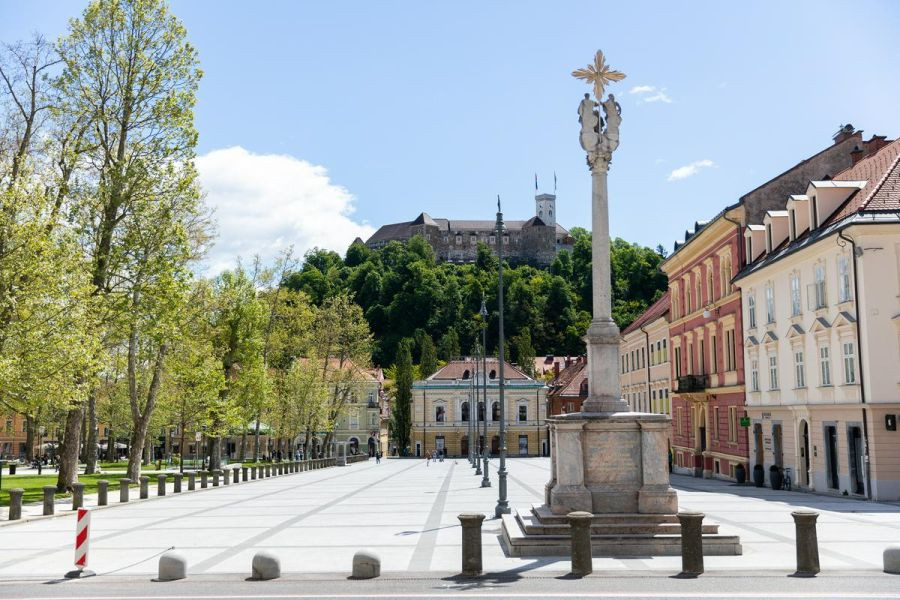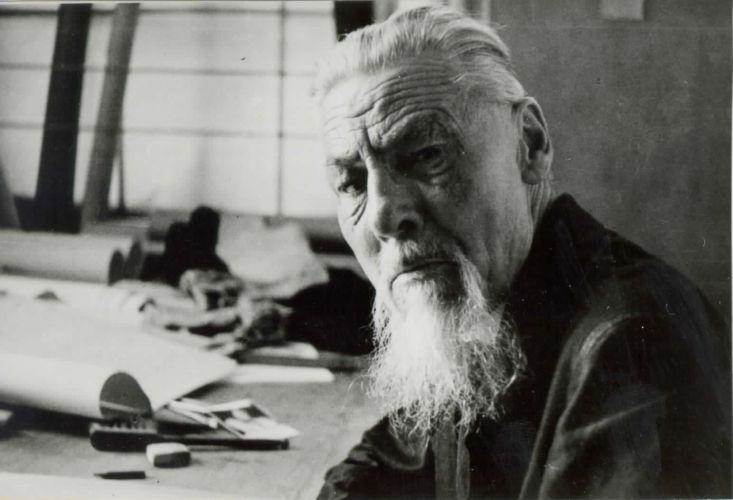Plečnik's works added to the UNESCO World Heritage List
Exceptional urban design
In designing his additions to Ljubljana, Plečnik started from what was already there, and, taking into account the city’s qualities, the topographical features of the area and past architectural achievements, connected and upgraded it into a recognisable whole, which today is also known as "Plečnik's Ljubljana".
The selected buildings, complexes and spatial arrangements meet the criterion of "an outstanding example of a type of building, architectural or technological ensemble or landscape which illustrates (a) significant stage(s) in human history". At the same time, they also meet authenticity and integrity requirements, enjoy legal protection and are under a formal management system. All three make up the pillars of the concept of outstanding universal value on a global scale. The nomination for "The works of Jože Plečnik in Ljubljana – Human Centred Urban Design" was coordinated by the Museum for Architecture and Design under the auspices of the Ministry of Culture.
The International Council on Monuments and Sites (ICOMOS) has recognised Plečnik's works in Ljubljana as an exceptional example of urban design. All the works are characterised by a distinctive architectural language, a revelation of the context of the city, the diversity of meanings and functions, the economy of interventions and, above all, human-centred design. All this then in line with the personal, deeply humane vision of the architect who transformed the former provincial city of the empire into a symbolic national capital. On 4 June this year, ICOMOS positively evaluated the nomination, thus confirming the validity of the proposal for inscription.
This was an independent nomination submitted by Slovenia, which decided to launch such a project after the joint Slovenian-Czech project had been unanimously terminated. Slovenia and the Czech Republic made this decision after an expert consultation with ICOMOS regarding preparations for the most suitable, professionally justified nomination that would also have the greatest chance of success.
Seven components
The selection of works comprises seven components: the city's water axis (the Ljubljanica River embankments and bridges from Trnovski pristan to the Ljubljanica Sluice Gate) and the Trnovo Bridge; the land axis (Vega Street (Vegova ulica) with the National and University Library, the Congress Square with Zvezda Park); the arrangement of the archaeological park (the Roman wall); the City of the Dead complex (Plečnik's Žale Cemetery – the Garden of All Saints); and churches in rural (St Michael's Church in Črna vas) and working-class suburbs (Church of St Francis of Assisi in Šiška).
ICOMOS wrote in its evaluation of the nomination that Plečnik’s approach to transforming the city was based on the reformist architectural movements of the early 20th century, an approach that is currently under-represented on the World Heritage List. Unlike contemporary modernism, it draws on completely different architectural starting points. The emphasis is on a high-quality public space which the architect upgraded with major and minor adjustments and integrated into a series of squares, parks, streets, promenades and public buildings.
The redesign is not based on radical renovation, but on complementing the space with the individual experience in mind. New designs that include architectural reminiscences and transform the existing network of the city invite us to engage in dialogue and identify with the city, and create a new type of urban space and architecture.
After the end of the First World War, Ljubljana acquired new functions of a regional centre and thus needed new administrative buildings and well-designed public spaces. Plečnik designed the plan for Plečnik's Market with the Butchers' Bridge and the new town hall building, which was complex and expensive but had all the support of the city's authorities. Construction was halted by the maelstrom of the Second World War– only the markets had been partially completed in April 1942.
A perfect example of an approach to heritage
After the inscription, the head of the working group of experts responsible for the preparation of the nomination dossier, Špela Spanžel from the Ministry of Culture, said on behalf of Slovenia at the meeting that the process that had led to this recognition had started ten years ago, at first as a reflection on the values of Plečnik's heritage, before evolving into the preparation of the nomination dossier. She said that joint efforts had brought together a wide range of expertise, enhanced cooperation with owners and managers and strengthened clear commitments from national and local authorities, and above all encouraged the careful crafting of the core message of Plečnik's heritage.
She said that they believe that "Plečnik's Ljubljana is a perfect example of an approach to heritage that respects past achievements and designs a future made to a human measure, thus reflecting modern notions, such as quality architecture and a built environment, management, sustainability, beauty and the sense of space."
She added that they had spent a very long time thinking about the right concept for the nomination to ensure it would stand a chance of inscription. That is why they had to reflect on the values of Plečnik's heritage, which, in addition to beautifully summarising the achievements of all past eras, is in fact open and very contemporary. Ljubljana is a city "that lives and breathes with Plečnik and where new arrangements are in the spirit of Plečnik's creative hand and that is far from something that exists only in the past," she said, adding that perhaps that is why this process was even more complex than in the case of inscription of an isolated monument or monument site.
In addition to Plečnik's works, Slovenia has four more inscriptions in the UNESCO World Heritage List, of which two are in the category of cultural heritage – prehistoric pile dwellings in the Ljubljana Marshes and the mercury mine in Idrija, and two in the category of natural heritage – the Škocjan Caves and ancient beech forests. Four special features of Slovenia are included on the Representative List of the Intangible Cultural Heritage of Humanity – the Škofja Loka Passion Play, door-to-door rounds of Kurenti, bobbin lacemaking, and dry stone walling.
Plečnik was quite special in his time
The preparation of the nomination was based on the operational guidelines for inscription on the UNESCO list, where the outstanding universal value of the nomination has to be justified according to predefined criteria. The selected buildings, complexes and spatial arrangements meet criterion (iv), which is a typological criterion for which it has to be proved that the property is an outstanding example of a type of building, architectural or technological ensemble or landscape which illustrates a significant stage in human history.
Plečnik was quite special in his time; he did not follow others and guidelines but chose his own path. He transformed the city by placing it in a context. He explored different levels – architectural, historical and intangible – and transformed the city for people, added Štoka.
Jože Plečnik was born in 1872 in Ljubljana. He attended the School of Crafts in Graz and studied at the Vienna Academy of Fine Arts at the architecture department headed by Prof. Otto Wagner. After completing his studies and his stay in Italy, he settled in Vienna for about ten years. At first he worked at Wagner's studio and then as an independent architect. Between 1911 and 1921 he lived in Prague, where he had a teaching position at the School of Arts and Crafts. In 1920 he was appointed as architect in charge of the renovation of Prague Castle and accepted the position of professor at the newly founded Faculty of Architecture in Ljubljana. In 1921 he moved to Ljubljana and then travelled extensively between Prague and Ljubljana until 1934, when he participated in the renovation of Prague Castle. In Ljubljana, with the National and University Library, he created a space for intellectual culture and, with the Križanke complex, a space intended for art; he built the Bežigrad stadium for sporting activities, dedicated the Congress Square for political political gatherings, arranged the embankments of the Ljubljanica river for young lovers and Tivoli Park for city walkers. He was also invited to other parts of his homeland, and his activities extended to other republics of the former Yugoslavia. He died in 1957 at his home in Trnovo. In terms of the excellence, diversity and scope of his work, Plečnik ranks among the most important European architects of the 20th century. His work has made a significant impact on the European capitals of Vienna, Prague and, in particular of course, Ljubljana. Slovenia declared 2017 as the Year of Plečnik, as 7 January marked the 60th anniversary of his death and 23 January marked the 145th anniversary of his birth.
sorodne vsebine
-
Slovenian athletes successfully represent Slovenia at the Tokyo Olympics
-
Plečnik's works added to the UNESCO World Heritage List
-
30 years of sporting achievements
-
A short history of Slovenia
-
The Slovenian anthem emphasises ties and friendship among nations
-
Port of Koper as a green point of entry into the heart of Europe
-
1991 Prešeren Award Winners
-
Drago Jančar – a European storyteller in the Slovenian language
-
A special series of "I feel Slovenia" vehicles
-
Dialects enrich the Slovenian language


